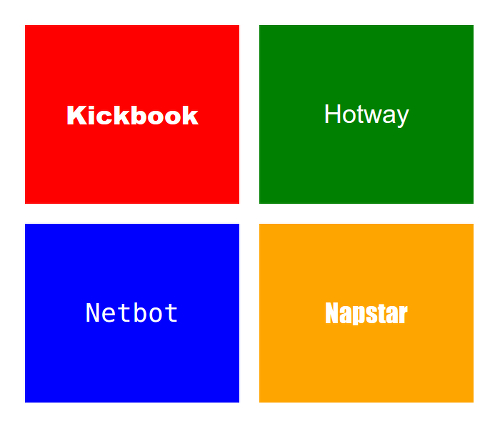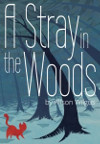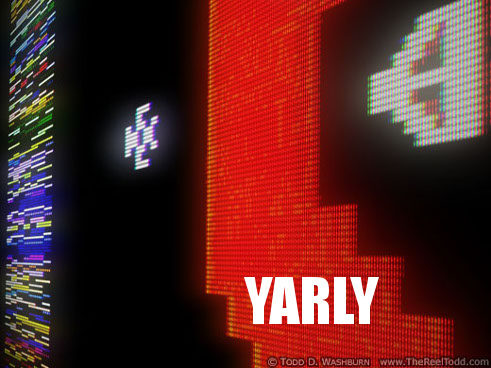The End of Oulipo? : An Attempt to Exhaust a Movement by Lauren Elkin & Scott Esposito (2013) claims that “Georges Perec … wrote a palindrome of over 5,000 words …” (p. 15, also mentioned on p. 25). However, this is wrong, unless these authors have access to an extraordinarily surprising never-before published palindrome of Perec’s. His long palindrome does not have this many words.
In 1980, Hachette published Perec’s La Clôture et autres poèmes, which contains “Le Grand Palindrome,” written in 1969. “Le Grand Palindrome” is also online; it is posted on another page without its title but with a declaration that the palindrome is 1247 words long.
Wikipedia states that this text has 1247 words and 5566 letters, and the French entry on Perec agrees. (The number of letters was probably the source of the confusion about 5,000 words in Elkin & Esposito’s book.) Since the palindrome is online, we can do some original research to determine the word and letter count – someone must have, because the cited source does not say how many words and letters there are; the source is simply the text itself. The Web is littered with different numbers that are supposed to be the length, in words, of Perec’s palindrome. David Bellos, who quoted and translated the beginning and ending of Perec’s long palindrome in his extraordinary biography, Georges Perec: A Life in Words, described the palindrome as consisting of two halves, each of five hundred words (pp. 428-429).
Standard word-count programs come up with a larger number of words than either Bellos or Wikipedia have: The Gnu utility wc counts 1367, for example. In part, that’s because some of the punctuation is set off with spaces. But it may also have to do with a reasonable way of counting words in French being different than wc’s method.
So, leaving aside the question of words for the moment — but noting that the answer seems to be in the 1000-1400 range, and couldn’t be 5000 – let’s take a look at the number of letters. I placed the palindrome’s text (all of it, including the strange title that is a reversal of Perec’s name and the place and date of writing) in a file called perec.txt and did the following to count the letters:
% fold --width=1 perec.txt | grep -c '[[:alpha:]]'
The result is 5219. Yes, I checked to make sure that accented letters are being counted on my system. I’m not sure where the extra 5566-5219=347 letters are supposed to be. There are only eight digits, so the ‘1969’ at the end (and ‘9691’ at the beginning) couldn’t account for the larger number. And I counted 736 punctuation marks, so the puzzle isn’t solved by considering punctuation marks to be letters, since that (in addition to being incorrect) would make the palindrome too long. Unless my text is corrupt, I suppose that some of the punctuation marks were counted as letters before.
♦
You can read in Daniel Levin Becker’s 2012 book Many Subtle Channels: In Praise of Potential Literature that Perec “wrote a palindrome of more than 1,200 words, the world’s longest until a computer program eclipsed it” (p. 181). The approximate word count seems right, but what about the rest of the statement?
On January 1, 2002, the first edition of Nick Montfort & William Gillespie’s 2002: A Palindrome Story was published. This text, published in a much nicer edition later in the year and made available in several formats online, is a 2002-word palindrome that we wrote together. We had actually hoped that the suite of software we developed, Deep Speed, would generate text for us and serve as a third co-author, but unfortunately its main use ended up being to check our work. In the end, 2002 was about as much generated by computer as “Le Grand Palindrome” was generated by typewriter.
(Perhaps Becker was referring to the data-driven palindrome found by Google’s Peter Norvig? That was composed and published on February 20, 2002, weeks after 2002 was first published in celebration of the new year. Also, while I consider it a brilliant hack, and while I certainly think that computer programs can produce literary output, I’m not sure how to understand or learn from this program and this text as a literary project. In terms of pure length, it’s a long palindrome, yes, but so is this; in fact, that one is longer than any that Norvig has produced.)
Now, to reassure Oulipo fans, 2002 and “Le Grand Palindrome” are written in different languages, so it would be awkward at best to claim that we directly outdid Perec. Also, it took two of us to write our English palindrome and only one of Perec to write his palindrome in French, so Perec still holds the record per-person per-palindrome. And finally, as my parenthetical remark and link above is supposed to show, it’s just silly to compare palindromes’ length alone; it’s important to read them and see how compelling they are. Writing a palindrome of more and more words involves conducting a more lengthy and profound exploration of language. Perhaps that type of exploration means falling off a cliff – as some thought Perec did; as some surely thought that William & I did in writing the exceedingly difficult text 2002. But it’s an exploration, and for us, as for Perec, it resulted in a radical and unusual literary work.
2002 received praise from members of the Oulipo and a positive review in the Review of Contemporary Fiction. It certainly wasn’t the usual one-line palindrome fare that many are used to. Although it’s challenging, I hope that more intrepid readers will eventually engage with text. I’m disappointed that a major magazine article on palindromes and the Wikipedia page on the topic don’t mention it. I’m disappointed that scholars and literary critics (who have devoted time to other works of mine and of William’s) haven’t delved into 2002. And it doesn’t give me much hope when the well-known long palindrome of a tremendously famous and influential French writer, however well-known it is, is still widely unread. We can’t even figure out how many words and letters it has.






